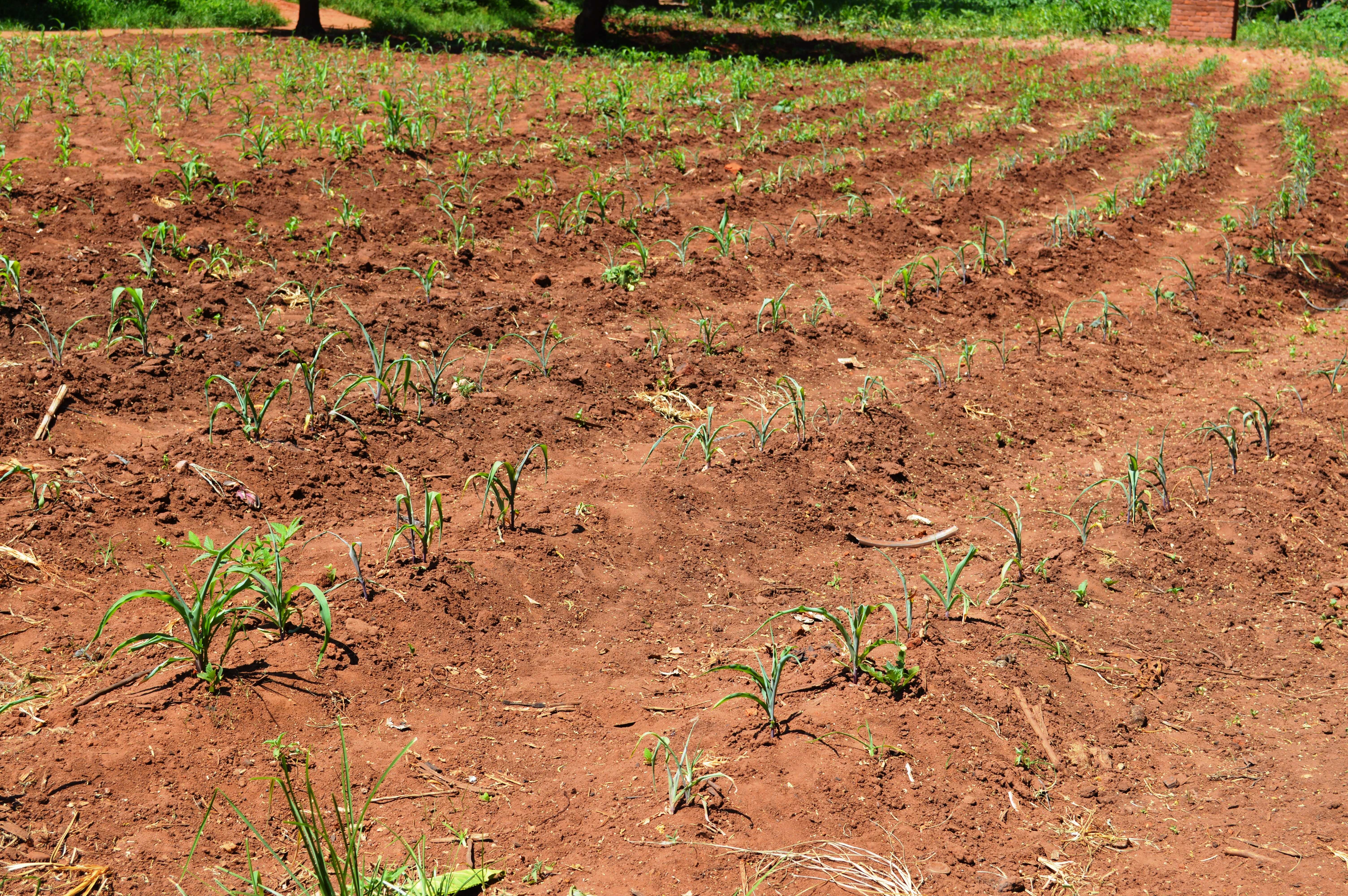
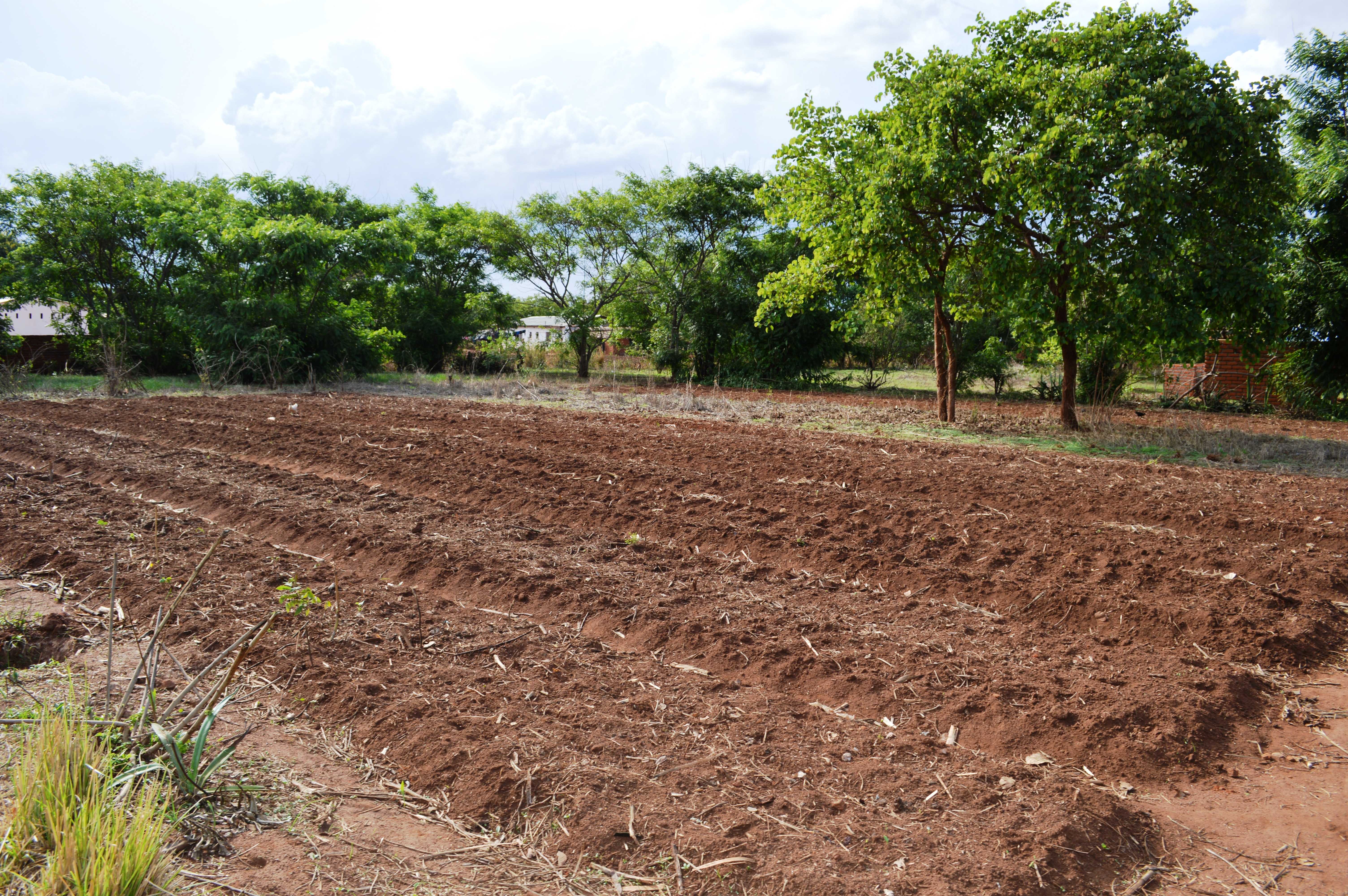
In Malawi, and many other countries, it is common for farmers to be encouraged to make ‘ridges’ for the monocropped planting of staple foods, such as maize. One of the main reasons for this is to give the roots of the plants some soft soil in which to grow. But is this really the most efficient and effective way to farm?
When a farmer creates a system of ridge-pathway-ridge-pathway throughout the entirety of their field, it means that 50% of the land ends up being food production, while the remaining 50% ends up being unproductive pathway. Productive land is reduced even further when farmers have boundary paths along the edges of their fields.
These pathways are compacted by foot-traffic during the planting and harvesting seasons, and then the following year, the ridges are ‘turned’ on top of the old pathway. This means that the same soil simply gets moved back-and-forth, while the entire field gets compacted over time. When soil is compacted, water cannot be absorbed and ends up running off. This leads both the the increase in flooding during heavy rains, and drought during the time of scarcity.
In Permaculture, one of the ways to help remedy these problems is through the construction of permanent ‘beds’. In the one-meter space that once held a ridge-pathway-ridge, a bed can easily be created. From the side of these beds, farmers can reach the edge and the middle for planting. This means that a crop, like maize, may be established on both edges of a bed, while the middle may be planted with nitrogen-fixers (e.g., cowpeas, soy beans, pigeon peas, etc.), or with groundcovers (e.g., pumpkins, cucumbers, squash, etc.), or with longer-term crops (e.g. cassava, sweet potatoes, etc.).
The simple construction of permanent beds allows farmers to get 70% of their fields under cultivation for food, while only 30% is used for pathways. This is the potential for 20% more food in a single year!
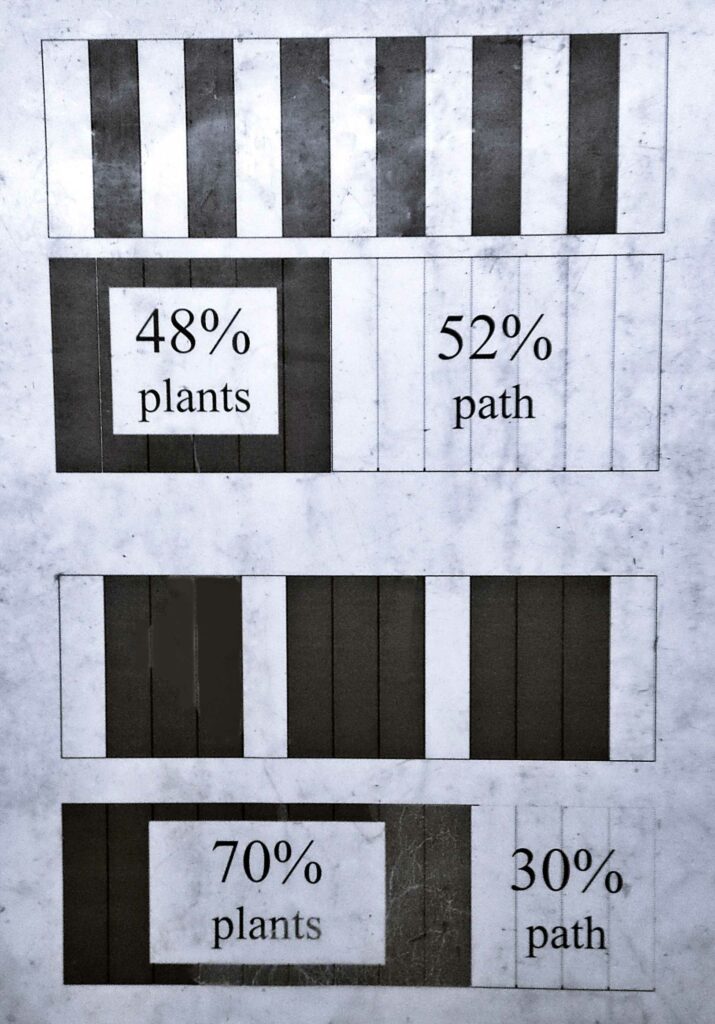
Due to the fact that these beds are permanent, farmers no longer need to walk on them. This allows for the soil to once again become soft and porous, allowing water, nutrients, and air penetrate the soil. It also means that farmers don’t have to start preparing ridges a month in advance of the rainy season.
All of the good agricultural practices which are promoted still work with beds. If a farmer wants to practice crop rotation, they can plant a crop like groundnuts one year and the next year a heavy-feeder, like maize. If they want to practice agroforestry ‘alley cropping’, they can use the beds for the establishment of crops like tephrosia or pigeon peas. If they want to plant their maize using the ‘Sasakawa’ spacing of 25cm between planting stations, this can be done in a square with edges of 25cm and a bean (like soy or cowpea) planted in the middle of the square.
These beds may also be intercropped to increase nutritional diversity, to create seasonal harvests, and can increase the establishment of habitat and species which repel pests and attract beneficial predators (integrated pest management).
The use of permanent beds helps to mitigate the effects of climate change, reduce the chance of floods, retain soil moisture, diversify nutrition, and make agricultural systems more resilient. The two pictures below were taken on the same day during the 2016 ‘drought’. The picture on the left shows the unhealthy maize crops that were in many Malawian fields, while the picture on the right shows the bed-system in use at Never Ending Food.
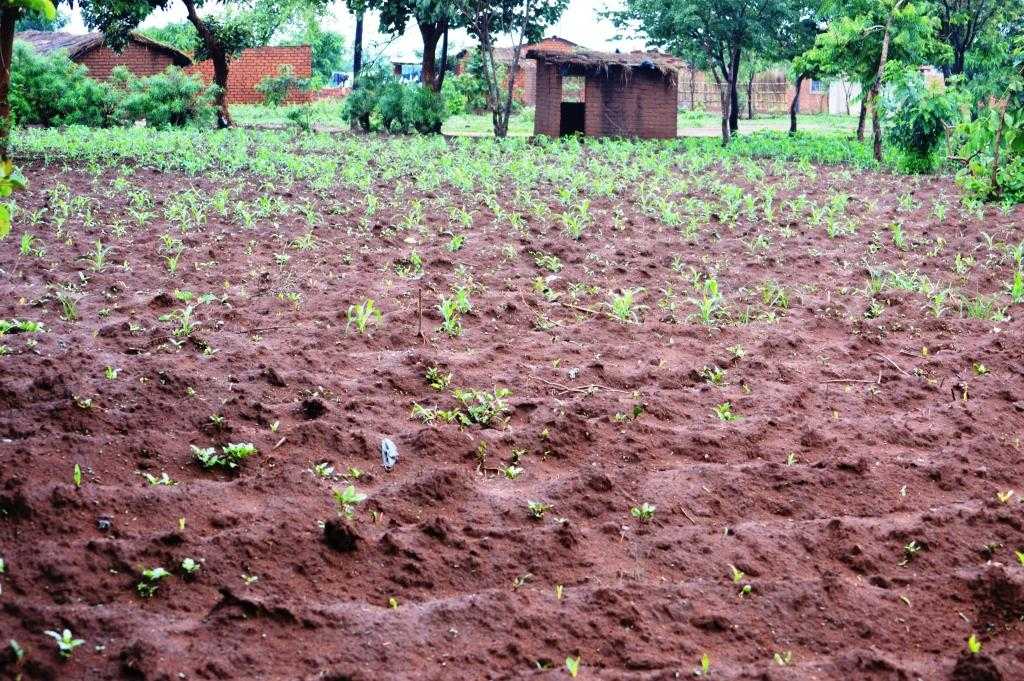
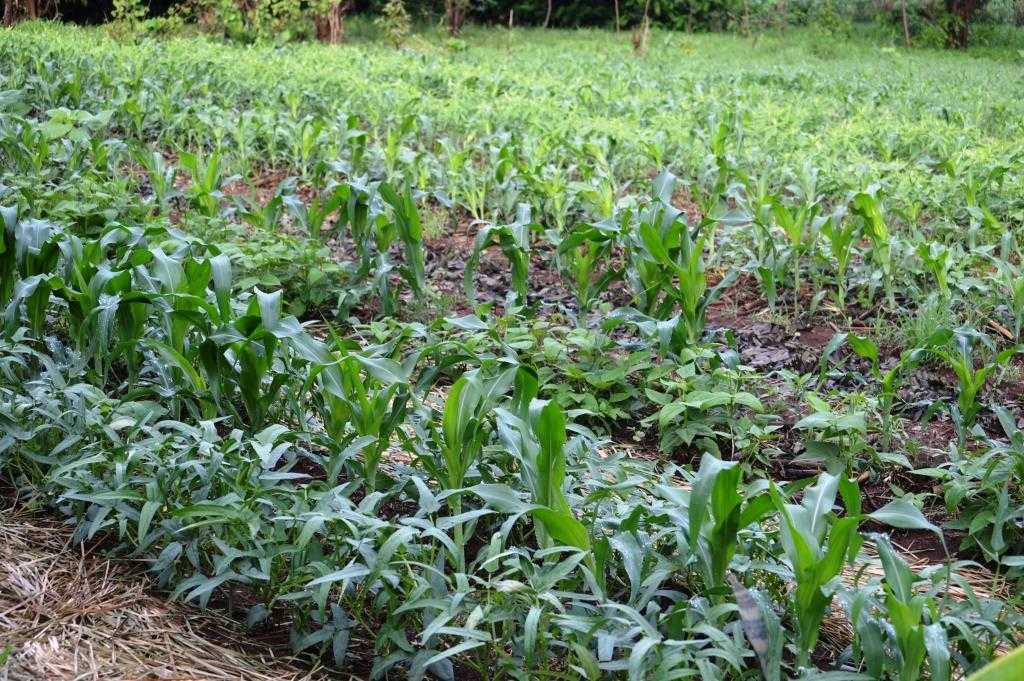
All donations go directly towards helping to spread Permaculture solutions throughout Malawi. Every little bit helps, and even a little can go a long way!
